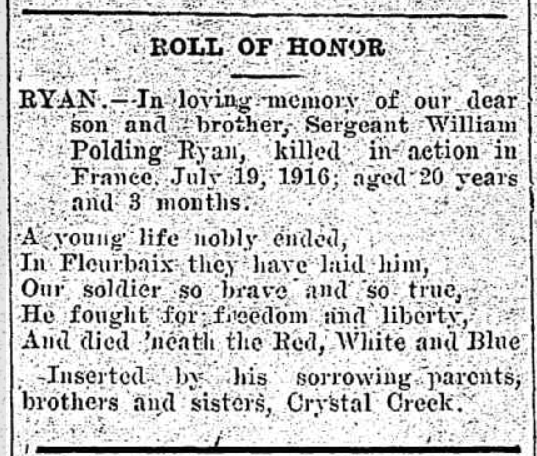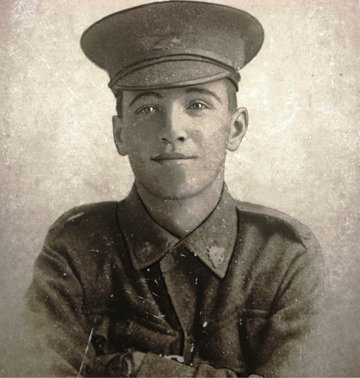
William Polding RYAN
Eyes brown, Hair brown, Complexion dark
William Polding RYAN, his early life
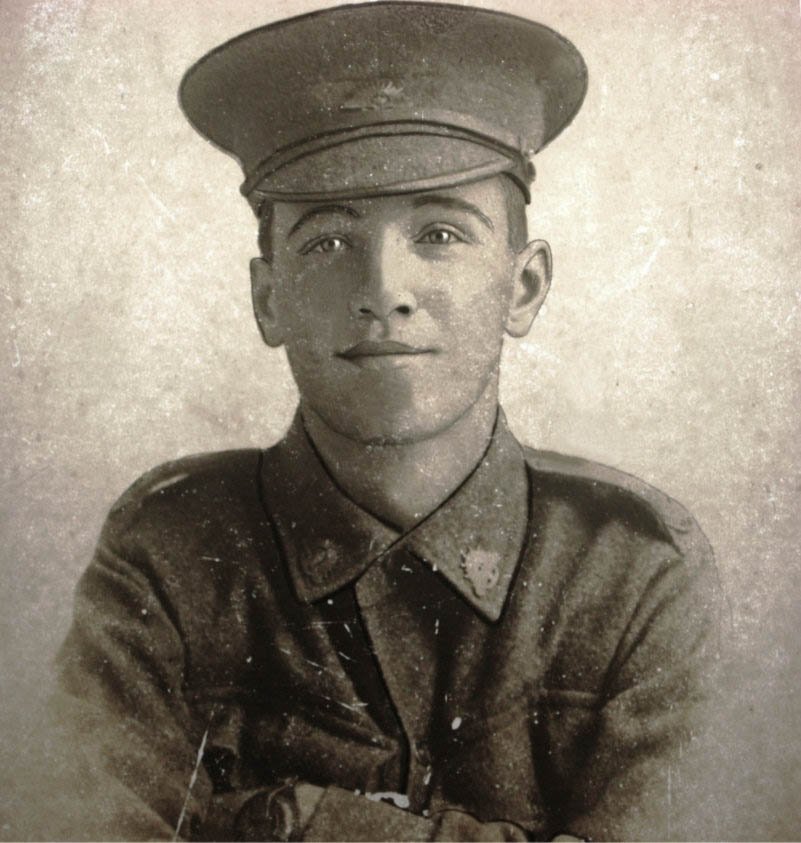
William was just one of nine sons of Patrick Polding Ryan and Jane (Cooper) Ryan. He was born on 4th April 1896 at Dunbible, near Murwillumbah New South Wales. Before he was born, he already had ten siblings, but three had died in infancy, all in 1882 – newborn twins, Patrick and Mary and 15-month-old Johanna.
William’s father appears to have been a miner, a shepherd and a farmer at various times, and the family moved from place to place. They had lived at Tingha, Tenterfield, Wallangarra, Lismore, and Murwillumbah in New South Wales, but also at Coombabah in Queensland. After William’s birth in 1896, there seems to have been more stability in that the family continued to live in the Murwillumbah area with a further three children born after William’s arrival. In total, William had seven older and three younger siblings who survived to adulthood.
William is recorded as being a labourer and it is likely that he worked on his parent’s farm at Upper Crystal Creek. In 1908 Patrick Polding Ryan took up a Conditional Purchase of two portions of land totaling 297 acres at Upper Crystal Creek. The land stands in the foothills of Mt. Cougal, just across the border in Queensland. The Crystal Creek Rainforest Retreat is located nearby today.
When the Ryans acquired their farm, William would have been 14 years of age. Living in a rainforest area, there can be little doubt that he felt the sunshine and the rain regularly. He would have experienced the dawn across the farm as well as the evening sunsets while labouring, and he would have had experience with farm animals from an early age, and listened to the birds in the trees and the sky above.
Off to war
War was declared in 1914 and Australians were called to do their part for King and Country. Four of the Ryan brothers answered that call – Ned, Maurice, Daniel and William.
William’s elder brother Edward (Ned) Mahoney Ryan [1894-1971] was the first to go. He enlisted in the 2nd Light Horse Regiment on 7 January 1915 and went on to serve at Gallipoli, in Egypt, and in defence of the Suez Canal and other actions. Edward returned to Australia on 19 April 1919.
Another brother, Maurice, enlisted on 2 October 1916 in the 49th Battalion. However, ill health en route to war service meant that he returned home medically unfit in 1917. He had suffered meningitis, rheumatic fever and related heart issues spending some months in South African hospitals before being well enough to be sent home. Maurice [1891-1958] was deemed eligible for a part pension only for a short period and went on to work for the New South Wales Railway Department.
Daniel Ryan [1884-1946] lived in New Zealand for some years and married there. He enlisted with the New Zealand Army Reserve but we believe he did not see active service.
At the time William enlisted in July 1915, his address was given as Upper Crystal Creek, Tweed River. He was assigned to the 31st Battalion which, according to the Australian War Memorial site, ‘was raised as part of the 8th Brigade at Enoggera, on the outskirts of Brisbane, in August 1915. Some of the battalion's companies, however, were also raised at Broadmeadows Camp in Victoria. In early October, these two elements were united at Broadmeadows, and the battalion sailed from Melbourne the following month.’
A fellow Murwillumbah recruit – Corporal Francis T. C. Wilkinson, described their time in Melbourne as more of a holiday than soldiering’. Francis was writing on behalf of the Murwillumbah boys – including William and his brother Edward (already serving overseas) - who were awarded sheepskin waistcoats donated by the local Murwillumbah Red Cross Society.
Source: RED CROSS SOCIETY (1915, November 16). Tweed Daily (Murwillumbah, NSW : 1914 - 1949), p. 2. Retrieved September 4, 2020, from http://nla.gov.au/nla.news-article191039367
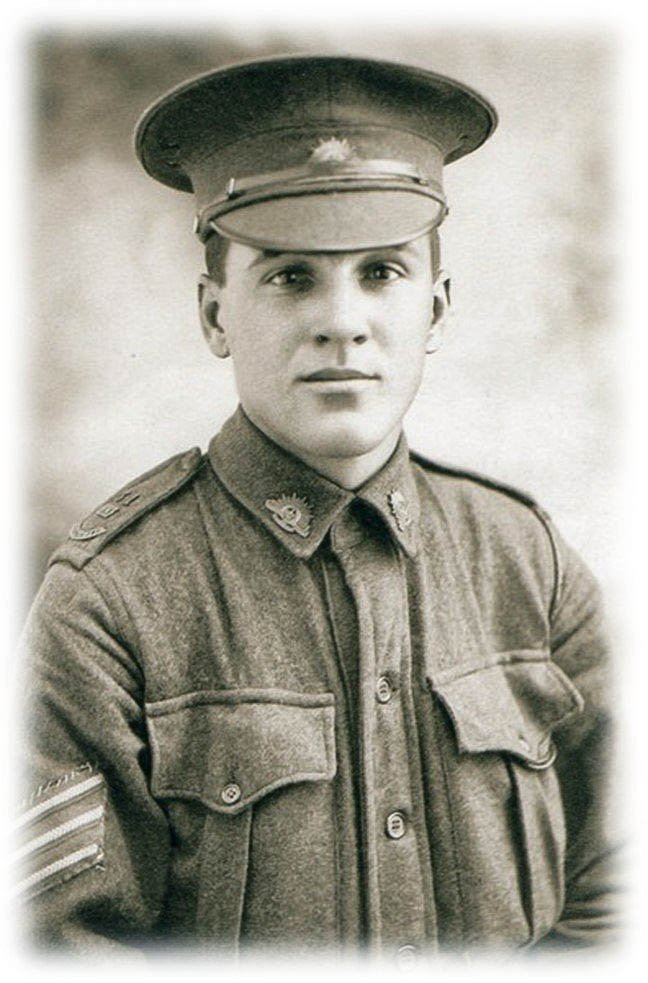

Francis Wilkinson and William Ryan both served in the 31st Battalion and left Melbourne in early November 1915.
William’s AIF file shows him as acting sergeant before being formally promoted to lance corporal then finally to corporal. It is likely he was serving as sergeant in the CMF before the war and remained as acting sergeant as an interim measure on enlistment. Family and news articles use both sergeant and corporal ranks at various times.
William’s name was included in the casualty lists as Missing, in the Tweed Daily (Murwillumbah) on 1 September 1916. His father as next of kin would have received the notification sent, probably by cable, on 18 August 1916.
On 6th January 1917, Mr. W. Massey Green, MP for the Murwillumbah region, wrote to Base Records to enquire:
“The parents of this soldier have written to me complaining that they can get no reply to their inquiries for further news of their son.
Can you inform me whether anything further is known that he was wounded and missing.“
By 13th January 1917, a letter was sent in reply to Mr. W. Massey Green, from Army Base Records advising that:
“….no request of any description had been received by this Branch, from the relatives of this soldier. No further information is to hand concerning his case, and without the production of some definite authentic evidence, conflicting with the official advice, my instructions preclude any investigations being made from this end at present.
It must be remembered that the whole of the machinery of the British Army for dealing with cases of this description is available, and being utilised in connection with members of the Australian Imperial Force.”
Hardly a comforting reply for William’s parents who could then only wait for more news. The opening statement about Base Records not having received enquiries is probably correct as families were encouraged to liaise with the Red Cross Society and it is there that enquiries about William’s fate and welfare were probably directed rather than the army.
A Court of Enquiry, held in the field on 1st August 1917, pronounced William’s fate as Killed in Action, 19 July 1916. This finding was supported by three statements given in response to Red Cross investigations.
From 1570 Pte Walter G.W. RALSTON, 31st Battalion, (27 Feb. 1917):
“'I knew him, we were at Fleurbaix. During the attack he was killed by a shell. I was fairly close at the time and saw the shell burst but I did not know then whom it had killed but the men afterwards told me it had killed him.”
From 412 Pte Trevor McBRYDE, 31st Battalion, (27 Feb. 1917 1st of 2 statements):
“I knew him very well. We were at Fleurbaix. We held the trenches for 14 hours and were then bombed out. I saw him killed by a shell on the evening of July 19th.”
From 412 Pte Trevor McBRYDE, 31st Battalion (15 Mar. 1917 2nd of 2 statements):
“I saw Cpl Ryans body lying dead on the ground, during the charge he (sic) made on July 19th. “
It seems, however, that the family pre-empted the army’s formal finding and had accepted that William had been killed – probably based on the kindly advice of the Red Cross and their experience of such cases. The family had placed a memorial notice in their local paper on the first anniversary of his death, weeks before the Court of Enquiry was finalised.
No personal effects were returned to the family but from 15th January 1918, a pension of £2/- per fortnight was paid to William’s father, Patrick Polding Ryan.
At the conclusion of the war, William’s war service medals (the 1914-15 Star, the British War Medal, and the Victory Medal) were issued to his father as next of kin as was the memorial plaque and scroll.
Almost a century later………
William’s story might not have been any longer than that, but he was one of the 250 soldiers discovered in a mass burial grave at Pheasant Wood, near Fromelles, in 2008, and unearthed in 2009.
His name, however, was not one of the 190 names of soldiers they identified as probably having been buried at Pheasant Wood. So, members of the broader Ryan family registered with the Army to be considered for DNA matching with the remains uncovered. It was through a sample from a nephew of William’s - a son, then in his late 70s, of William’s brother Edward Mahoney Ryan - that a match was made.
On 16th March 2010, a great nephew of William’s received a call from the War Graves Commission to be told that a Media Release was to be issued, and that William Polding Ryan had been positively identified. Something so simple as a DNA sample from a nephew born long after William’s death had helped to identify the remains of a soldier killed in action nearly 94 years before – a soldier whose story may otherwise have never been known beyond World War 1.
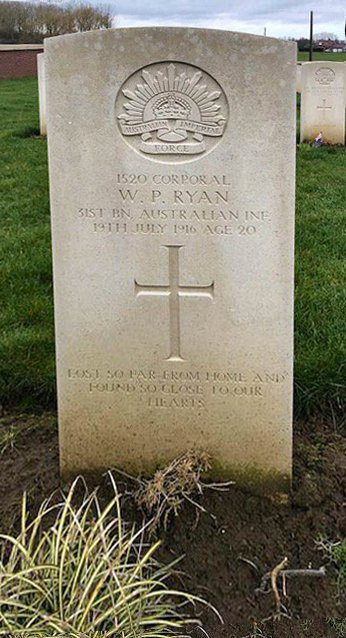
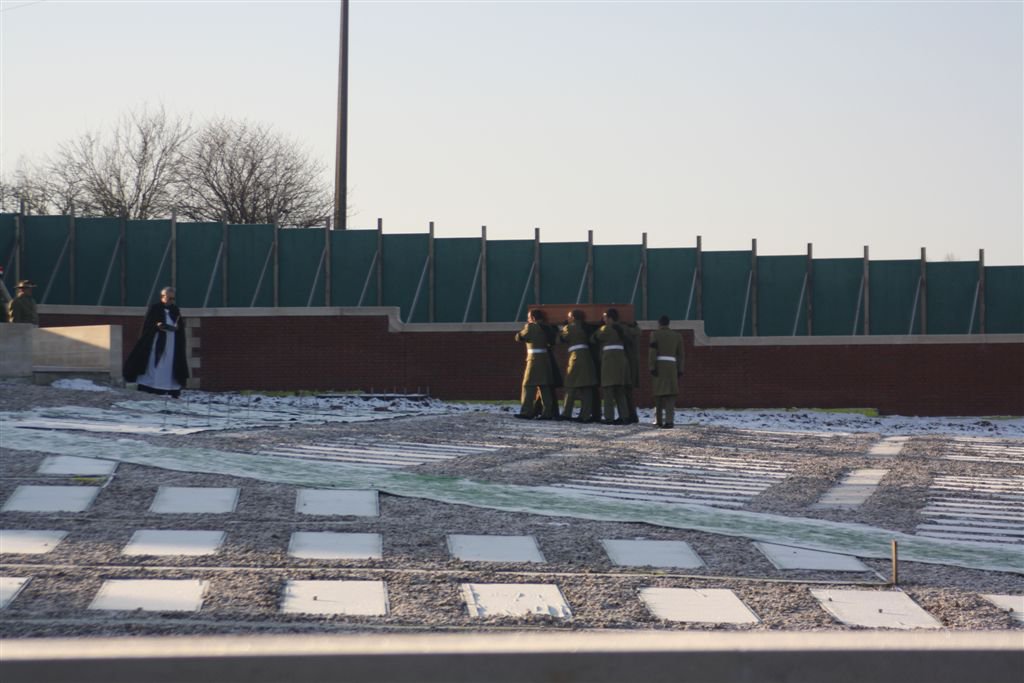
Originally listed as having no known grave and commemorated at V.C. Corner (Panel No 3) in the Australian Cemetery at Fromelles, William was interred in the Fromelles (Pheasant Wood) Military Cemetery with a headstone dedicated to his memory after his identification in 2010.
On 19th July 2016 exactly one hundred years after William was killed, his great-nephew stood with six others in front of the grave in Fromelles and sprinkled soil from William’s birthplace of Dunbible, New South Wales. William was no longer lost and unknown but was again connected to home and family.
But that isn’t the end of the story either….
A statue of William was unveiled on 18th June 2018 as part of a new Anzac Memorial Shelter at the Wollondilly Anglican College at Tahmoor, New South Wales. At the official opening, college students and dignitaries - including former Prime Minister John Howard, Chief of Defence Air Chief Marshal Mark Binskin, and Director of the Australian War Memorial, Dr Brendan Nelson - joined with headmaster, Dr Stuart Quarmby, and veterans.
The ceremony paid tribute and honoured soldiers who had died in World War I, with particular reference to the Battle of Fromelles, the horrors of war and the lives of particular soldiers and their families. Dr Quarmby spoke about his relatives, Alfred George Tuck and William Polding Ryan, who died on their first day of battle on July 19, 1916 at Fromelles. Their bodies lay in mass unmarked graves until they were identified by DNA from surviving family members. During the ceremony, Dr Quarmby said:
The statue of the soldier represents all of the diggers who fought and died in the Battle at Fromelles in a 24-hour period.
He went on to say in his dedication:
When looking at the statue, imagine every student saying: Thank you for paying such a price. And imagine him saying Thanks for finding me.
The statue, made by sculptors Gillie and Marc Schattner, has a special meaning to the headmaster, as well as to Geoffrey Benn, a great nephew of William’s who had been invited to the unveiling. It is a representation of 20-year-old William Polding Ryan holding the hand of a five-year-old girl. The girl was modelled on Hannah, then a year one student at the college, a granddaughter of the college headmaster and a relative of William Ryan. Geoffrey and Hannah had the honour of unveiling the statue as representatives of the Ryan family.
Family and Fromelles Connections
Geoffrey Benn, Stuart Quarmby and Hannah are all related to Corporal William Ryan being descendants of William’s siblings. William was uncle both to Geoffrey’s mother and to Stuart’s grandmother. Hannah is a grandchild to Stuart. In addition, Geoffrey is President of the Fromelles Association of Australia.
In a rare combination of relationships, Stuart and Hannah are also related to Corporal Alfred Tuck who also perished at Fromelles and is buried in Pheasant Wood cemetery at Fromelles.

To think that this 2018 event was, in many ways, just one of many results of a phone call in March 2010 to advise that a great uncle had been identified by use of another family member’s DNA.
Corporal William Polding Ryan was indeed Lost so far from home but has since been Found so close to our hearts.
Links to Official Records
The Fromelles Association would love to hear from you

Contacts
(Contact: carla@fromelles.info or geoffrey@fromelles.info).
(Contact: army.uwc@defence.gov.au or phone 1800 019 090).
Donations
If you are able, please contribute to the upkeep of this resource.
(Contact: bill@fromelles.info ).
